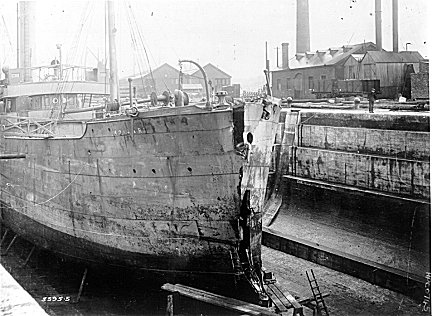
Moidart sunk
Sometimes we can use an account of an event recorded in a diary and do more research to build a fuller picture of what happened.
On June 8th 1918 Lady Mary Monkswell witnesses an attack on a U-Boat - a rare thing for anybody to have seen.
She writes “Came here fortnight today [Chideock] Watched an air-ship pass close, Lorna waved to it. It hung over Bay all PM. Sea planes came up from both sides, also destroyers, Great firing about 11pm. Did they get a U-boat? I think so.”
We know that something happened in the sea off Chideock but what exactly? If we look at records of U-boat losses and U-boat sinkings in Lyme Bay we can see a fuller picture.
Three hours after Lady Monkswell saw “great firing” First Mate William Dreve was on the bridge of the steamer Moidart in Lyme Bay. His ship was loaded with coal from Barry in Wales.
At 2am he spotted a U-boat 400metres away - which had not been seen by his lookouts. Within a minute, before they could react and launch her lifeboats, the ship was hit by a torpedo and sunk.
Six crew were rescued, 15 drowned. The sinking was attributed to a German U-boat UC77. Three days earlier the same U-boat torpedoed and sank the British steamer Huntsland 23 miles NW of LeHarvre - this time with no casulaties.
A few weeks later on July 14th 1918, the records tell us that UC77 herself was sunk by a mine off Flanders with the loss of all 30 hands
Over the course of the war German U-boats sank 2188 allied ships at a cost of 202 U-boats lost.
UC77 clearly escaped the air and sea attack off Chideock, recorded by Lady Monkswell in her diary but the net was closing on the U-boats and UC77 only survived another month before herself being sunk
https://uboat.net/wwi/fates/losses.html
https://uboat.net/wwi/ships_hit/losses_year.html?date=1918-06
